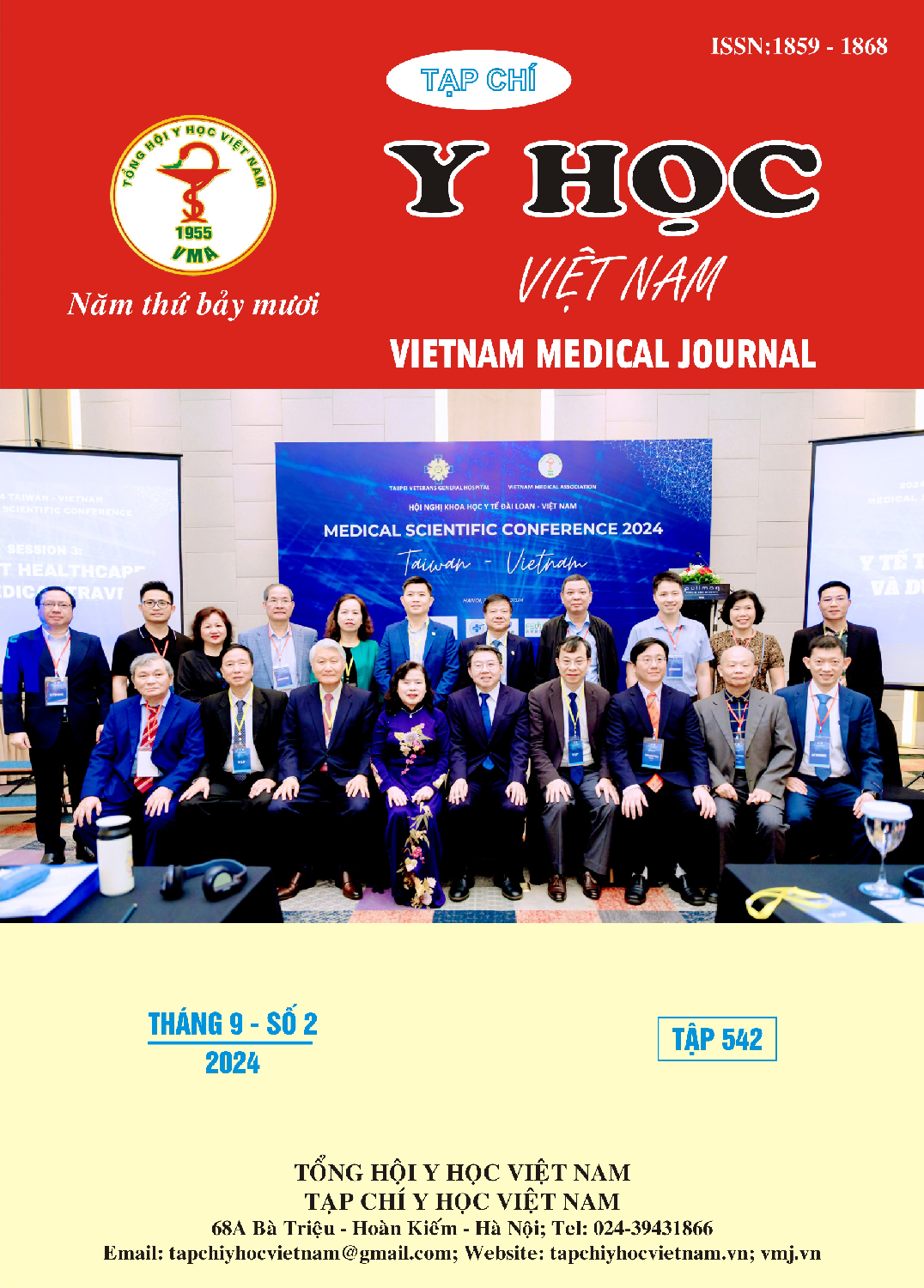CLINICAL AND NEUROIMAGING CHARACTERISTICS OF ALZHEIMER’S DISEASE WITH GENETIC ABNORMALITIES
Main Article Content
Abstract
Background: Alzheimer's disease is a neurodegenerative disease mainly caused by the accumulation of amyloid plaques from amyloid-beta-42 (Aβ42) and neurofibrillary tangles leading to neuronal dysfunction and death. People with Alzheimer's disease with genetic abnormalities will increase the production and decrease the excretion of Aβ42, leading to the formation of amyloid plaques that cause more neuronal cell death. These patients have common characteristics such as early age of onset, atypical clinical and imaging findings, making diagnosis difficult. Therefore, genetic testing is necessary to contribute to early diagnosis and early treatment of people with Alzheimer's disease. Objectives: To describe the proportions of genetic abnormalities, clinical characteristics, and neuroimaging features of Alzheimer’s disease with genetic abnormalities. Results: The genetic abnormalities recorded were APOE ε3/ε4, APOE ε4/ε4, APOE ε3/ε4 + APP, APOE ε4/ε4 + PSEN1 and PSEN2 with rates of 60%, 30%, 3.33%, 3.33% and 3.33%, respectively. Regarding the neurocognitive spectrum, the APOE ε3/ε4 group has a prominent decrease in memory, the APOE ε4/ε4 group clearly shows a decrease in memory, attention, and spatial vision, the APOE ε4/ε4 + PSEN1 group shows notable reductions in memory, attention, executive function, and spatial vision. Regarding imaging characteristics, the APOE ε3/ε4 group shows prominent signs of hippocampal atrophy, the APOE ε4/ε4 group clearly shows features of hippocampal atrophy and subcortical white matter lesions, and the PSEN2 group shows mainly posterior brain atrophy. Conclusion: People with Alzheimer's disease with genetic abnormalities have an early age of onset, atypical clinical and imaging findings, and a rapid rate of disease progression. Among them, the most common genetic abnormality is APOE ε3/ε4.
Article Details
Keywords
Alzheimer’s disease with genetic abnormalities, amyloid precursor proteins (APP), presenilin-1 (PSEN1), presenilin-2 (PSEN2), apolipoprotein-E (APOE).
References
2. Ryan NS, Nicholas JM, Weston PSJ, et al. Clinical phenotype and genetic associations in autosomal dominant familial Alzheimer's disease: a case series. Lancet Neurol. 2016; 15(13):1326-1335. doi:10.1016/s1474-4422(16)30193-4.
3. Robinson M, Lee BY, Hanes FT. Recent Progress in Alzheimer's Disease Research, Part 2: Genetics and Epidemiology. J Alzheimers Dis. 2018; 61(1):459. doi:10.3233/jad-179007.
4. Panegyres PK, Chen HY. Differences between early and late onset Alzheimer's disease. Am J Neurodegener Dis. 2013; 2(4):300-6
5. Chai AB, Lam HHJ, Kockx M, Gelissen IC. Apolipoprotein E isoform-dependent effects on the processing of Alzheimer's amyloid-β. Biochimica et Biophysica Acta (BBA) - Molecular and Cell Biology of Lipids. 2021; 1866(9):158980. doi:https:// doi.org/10.1016/j.bbalip.2021.158980.
6. Li B, Shi J, Gutman BA, et al. Influence of APOE Genotype on Hippocampal Atrophy over Time - An N=1925 Surface-Based ADNI Study. PLoS One. 2016; 11(4):e0152901. doi:10.1371/ journal.pone.0152901.
7. Lyall DM, Cox SR, Lyall LM, et al. Association between APOE e4 and white matter hyperintensity volume, but not total brain volume or white matter integrity. Brain Imaging Behav. 2020; 14(5):1468-1476. doi:10.1007/s11682-019-00069-9.
8. Mao C, Li J, Dong L, et al. Clinical Phenotype and Mutation Spectrum of Alzheimer's Disease with Causative Genetic Mutation in a Chinese Cohort. Curr Alzheimer Res. 2021; 18(3):265-272. doi:10.2174/1567205018666210608120339.


